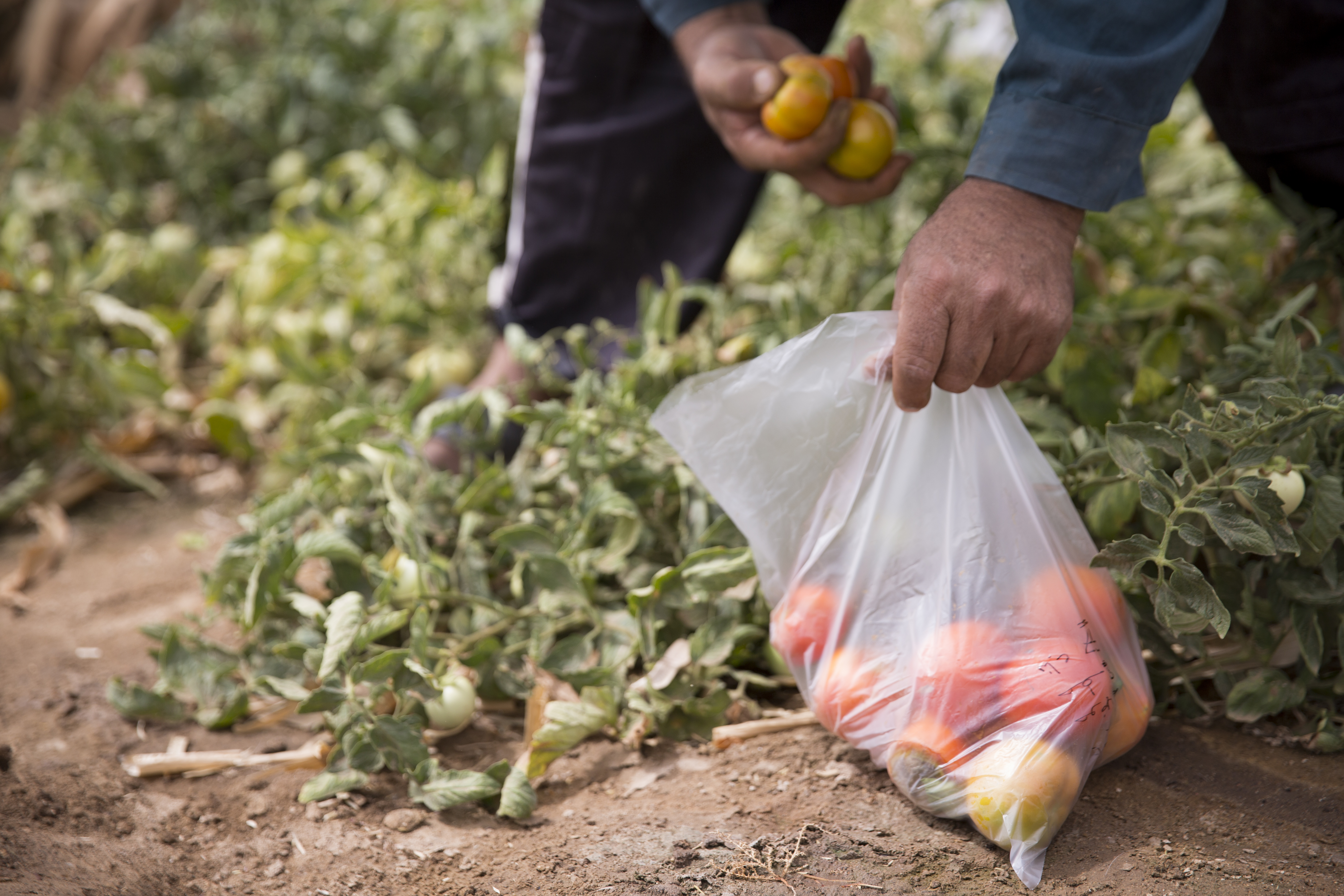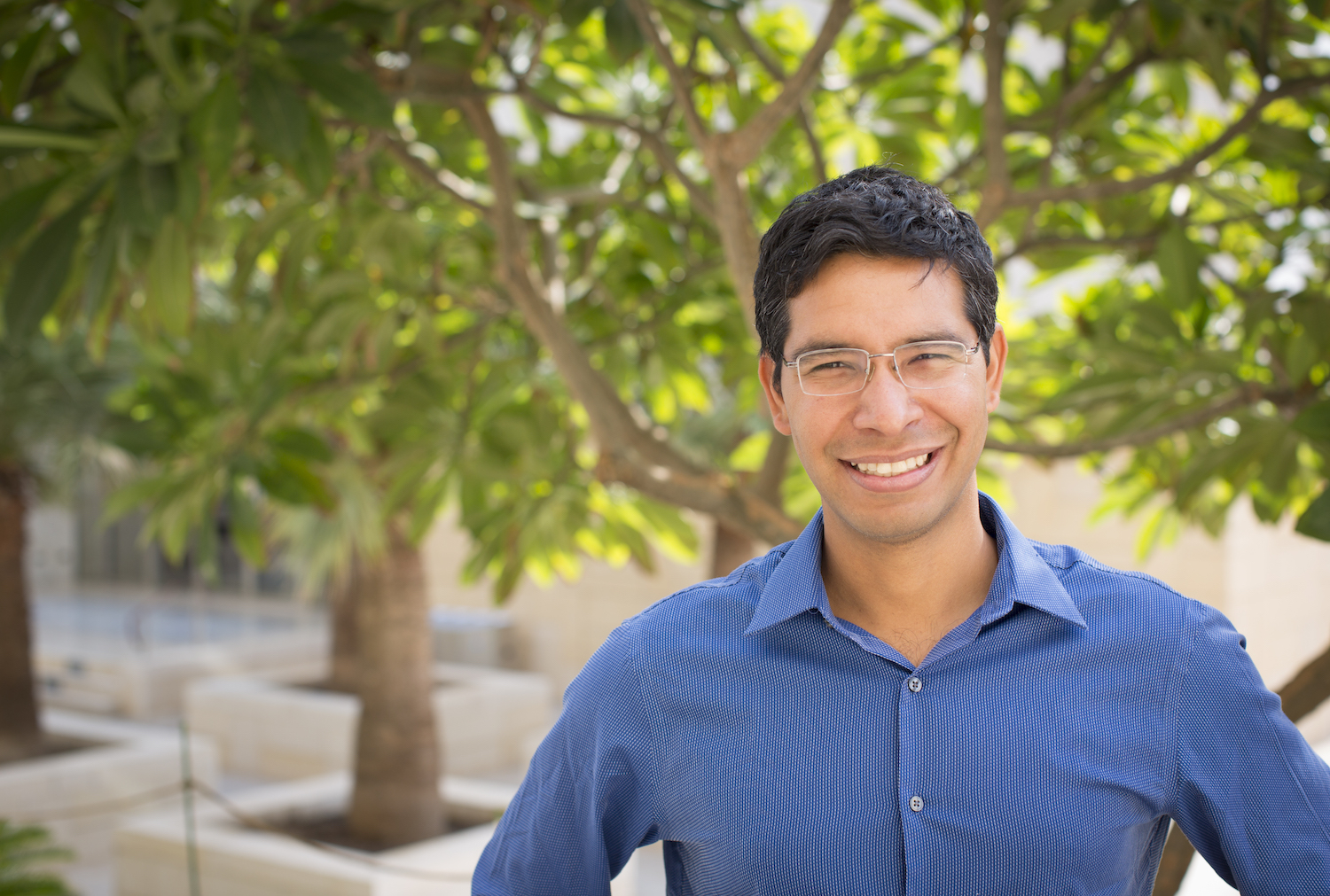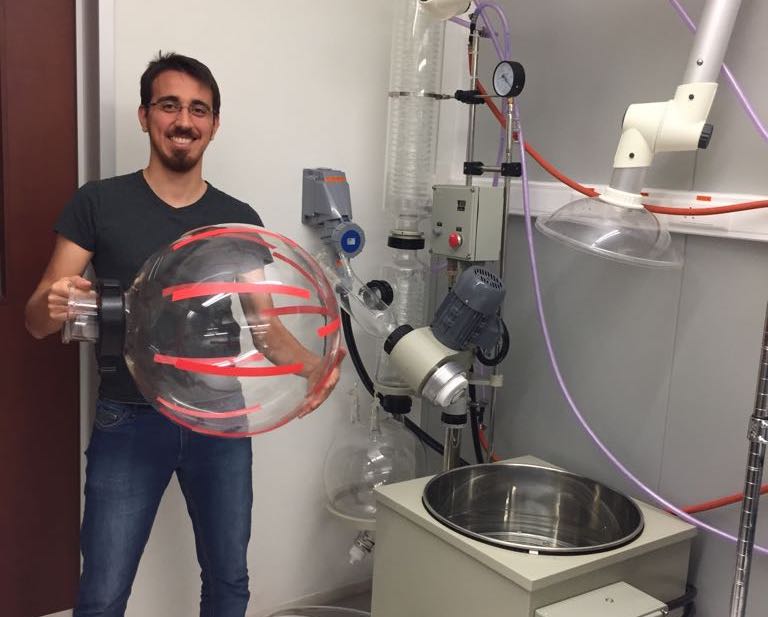Growing more with less

A joint research team from KAUST and King Abdulaziz University harvest a crop of tomatoes grown with the assistance of superhydrophobic sand.
-By Nicholas Demille, KAUST News
In liquid form, it makes our home planet unique in all of the known universe. It is the most abundant compound in the universe, according to the National Aeronautics and Space Administration (NASA), as it is made up of hydrogen and oxygen, the first and third most abundant elements, respectively. Yet surprisingly, there is no unified model to explain the behavior of water from the macro to the atomic level.
"You wake up in the morning and you drink water, you shower, you swim, it rains, you water your plants. Water is all around us—it is on us, it is in the clouds, it is in the air, and yet it turns out we don't really understand it," said KAUST Assistant Professor of Environmental Science and Engineering Himanshu Mishra.

Assistant Professor of Environmental Engineering Himanshu Mishra. Photo by Nicholas Demille.
"The top slice of water, the part that is touching air—is it slightly acidic or slightly basic? Or should it be neutral? That, believe it or not, has been a massively controversial issue over the last 20 years. If you go to some of these conferences, you might want to wear a helmet—it gets nasty," he continued.
Mishra speaks as though water molecules are living, breathing beings, each with a will of his or her own and yet a loyalty to the crowd—the image of water molecules as minions kept coming to mind as he spoke.
"The molecules at the surface are slightly frustrated. Why are they frustrated? Because their bonding network is kind of broken. And if on the other side, if it is a material that dislikes water, or if it does not like water nearly as much as water likes itself, then this frustration leads to an enhancement of energy on the surface, which is known as the surface tension of water," he said. "They don't want to increase their surface area because that will lead to an excess of energy, and water doesn't like that."
"The biggest consumer of freshwater in the world is agriculture—I learned this from a colleague here at KAUST," Mishra said. "I thought it would be some industry, I thought it would be some human consumption purposes, etc. But it's not, it is agriculture. So I thought, 'If you want to make a big dent in water security, you can just save 5 percent of the water from agriculture. That is a huge benefit.'"
Thus began a thought experiment about ways to save water in the agricultural sector in arid environments such as the Arabian peninsula using cheap and readily accessible materials. Mishra and KAUST Ph.D. student Adair Gallo Junior developed a radical solution—superhydrophobic sand.
a model used to display the properties of superhydrophobic sand sits in a display at the Saudi Water and Environment Forum in Riyadh. Photo by Nicholas Demille.
Gallo and Mishra have chosen a range of crops that include barley and tomatoes. The team has tested both increasing yield while keeping water consumption constant and reducing water consumption while keeping yield constant. Their early findings suggest a near doubling of yield while holding water consumption constant. Testing to reduce consumption of water is ongoing.

KAUST doctoral student Adair Gallo Junior holds a large, modified container used in the production of the team's superhydrophobic sand.
"In the early stages, when the soil is exposed, you lose a lot of water through direct evaporation from the soil. That is just wasted water because it is not being used by the plant to grow or to control its temperature," Gallo said.
Stopping the evaporation of water in agricultural settings is not a new concept. In the Western world, nearly 5 million metric tons of plastic is produced annually for mulching. The rolls of plastic sheeting are landfilled after harvest, which is, in Mishra's opinion, "nothing short of a massive ecological issue."
"In areas that are dry and hot—places like Saudi Arabia—they could be using 60 or 70 percent of the freshwater on agriculture. The amounts get into the thousands of cubic kilometers, which is a very large amount of water," Mishra said.
The team sees the superhydrophobic sand not only as a good solution but also as a cheap and accessible one for farmers in semi-arid and arid regions of the world.
"If you are a small-scale farmer, you might be better off using this superhydrophobic sand that you can just apply with your hands," Mishra said. "It has that advantage."

